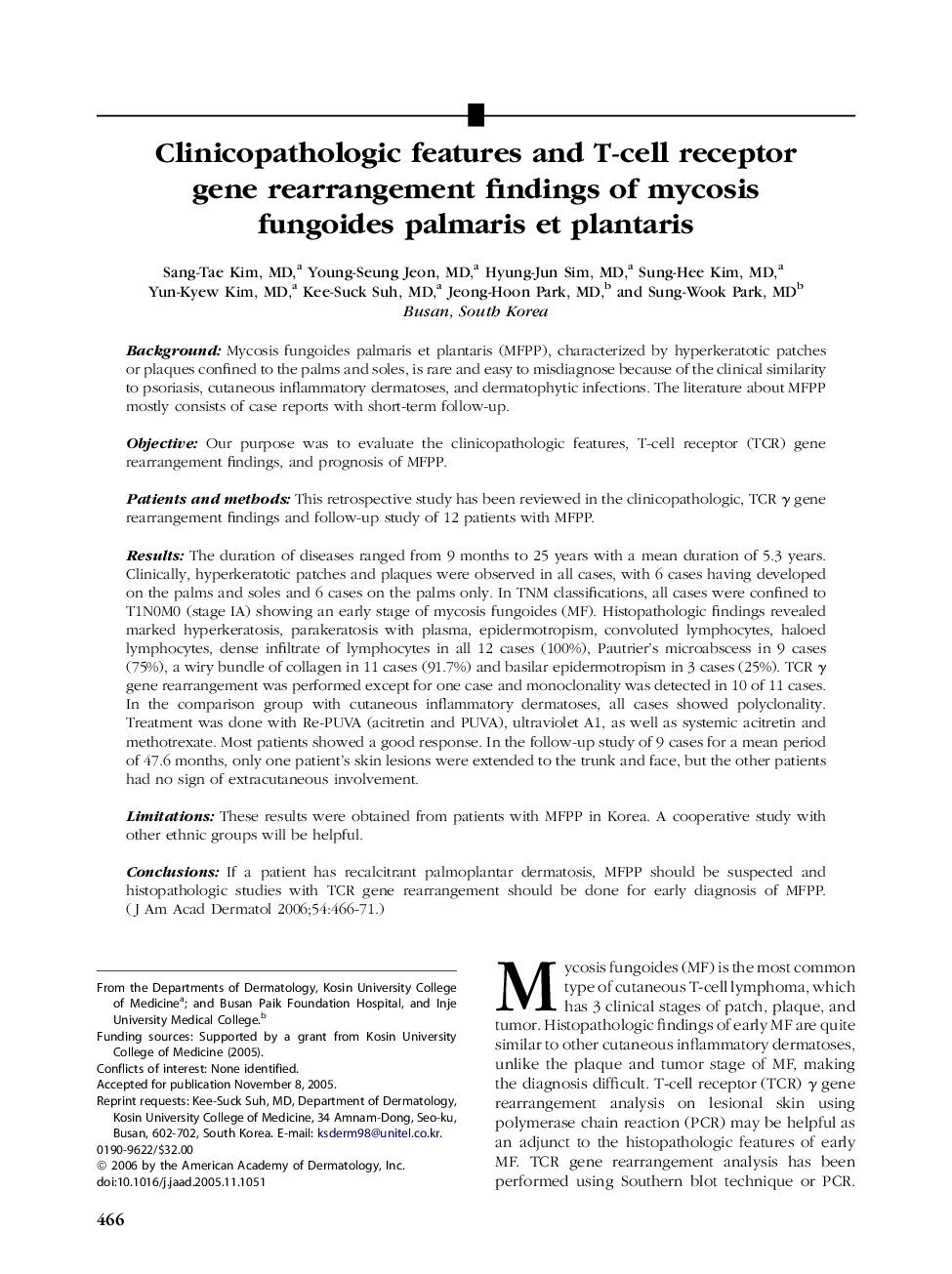| کد مقاله | کد نشریه | سال انتشار | مقاله انگلیسی | نسخه تمام متن |
|---|---|---|---|---|
| 3211625 | 1587665 | 2006 | 6 صفحه PDF | دانلود رایگان |

BackgroundMycosis fungoides palmaris et plantaris (MFPP), characterized by hyperkeratotic patches or plaques confined to the palms and soles, is rare and easy to misdiagnose because of the clinical similarity to psoriasis, cutaneous inflammatory dermatoses, and dermatophytic infections. The literature about MFPP mostly consists of case reports with short-term follow-up.ObjectiveOur purpose was to evaluate the clinicopathologic features, T-cell receptor (TCR) gene rearrangement findings, and prognosis of MFPP.Patients and methodsThis retrospective study has been reviewed in the clinicopathologic, TCR γ gene rearrangement findings and follow-up study of 12 patients with MFPP.ResultsThe duration of diseases ranged from 9 months to 25 years with a mean duration of 5.3 years. Clinically, hyperkeratotic patches and plaques were observed in all cases, with 6 cases having developed on the palms and soles and 6 cases on the palms only. In TNM classifications, all cases were confined to T1N0M0 (stage IA) showing an early stage of mycosis fungoides (MF). Histopathologic findings revealed marked hyperkeratosis, parakeratosis with plasma, epidermotropism, convoluted lymphocytes, haloed lymphocytes, dense infiltrate of lymphocytes in all 12 cases (100%), Pautrier's microabscess in 9 cases (75%), a wiry bundle of collagen in 11 cases (91.7%) and basilar epidermotropism in 3 cases (25%). TCR γ gene rearrangement was performed except for one case and monoclonality was detected in 10 of 11 cases. In the comparison group with cutaneous inflammatory dermatoses, all cases showed polyclonality. Treatment was done with Re-PUVA (acitretin and PUVA), ultraviolet A1, as well as systemic acitretin and methotrexate. Most patients showed a good response. In the follow-up study of 9 cases for a mean period of 47.6 months, only one patient's skin lesions were extended to the trunk and face, but the other patients had no sign of extracutaneous involvement.LimitationsThese results were obtained from patients with MFPP in Korea. A cooperative study with other ethnic groups will be helpful.ConclusionsIf a patient has recalcitrant palmoplantar dermatosis, MFPP should be suspected and histopathologic studies with TCR gene rearrangement should be done for early diagnosis of MFPP.
Journal: Journal of the American Academy of Dermatology - Volume 54, Issue 3, March 2006, Pages 466–471